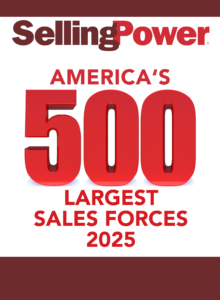Great Six-Minute Presentations
Brevity and greatness often go hand-in-hand. Abraham Lincoln’s Gettysburg Address was less than three minutes long. Moses heralded the arrival of the Ten Commandments in less than five minutes. Winston Churchill’s famous Blood, Sweat and Tears speech was two and a half minutes long. If these timeless speeches were given in such a short time, surely a sales rep can make a strong presentation in six minutes, says Ron Hoff, author of Say It in Six: How to say exactly what you mean in six minutes or less (Andrews and McMell, 1996).
If you conclude your presentation in six minutes or less, Hoff says, “Your audience will undoubtedly be impressed – and grateful. In addition to being the soul of wit, brevity seems to make people appreciative.” To cull your presentation to a sharp, focused six minutes, Hoff recommends using the following structure.
1. Define the burning issue (30 seconds). Chop off the first half of your current presentation – the one with the long introduction about how you appreciate the opportunity to be presenting today, the history of your company, your products and so on. Start right in on what the audience is interested in – their burning issue. If you sell a product that gets sales reps to use their organization’s CRM system, you might start by saying: Your company just invested $2 million in a new CRM system and only 10% of your sales reps are using it. Until you can get your reps to input current, accurate information, your investment won’t pay off. I’m here to show you how our product can boost usage to almost 100%.
2. Present an overview (1 minute). In this portion, talk about why the burning issue developed and where you intend to find the answer. Connect the past with the present situation to set up the next section.
3. Make the idea tangible (2 minutes). Present your solution and provide tangible evidence of how it will work. Maybe the evidence is a clay model of a new product. Maybe it’s an architectural drawing. Maybe it’s a photo. Even an intangible service can be turned into tangible evidence. For example, say you’re selling the solution to CRM usage and your service enables reps to call in their customer information rather than type it. Do a quick demo by phoning in a customer report, hanging up and then pulling up the email your company sends out that let’s you can verify the accuracy of the entry.
4. Present the payoff (2 minutes). This is where you need to show the numbers that prove the prospect will receive a satisfactory return on investment. If your average customer achieves a 99% CRM usage rate among its sales reps, explain what that rate means to the prospect’s company in terms of numbers of users, customer loyalty, revenues and so on.
5. Make the interactive close (30 seconds). Here’s where you tell your audience members that it’s their decision to make and that you want to hear what they think about your solution. Get the audience to stand up and stretch. Open a window. Serve cold drinks. “More is decided during the interaction than during a speech or presentation,” says Hoff. “Once you’ve delivered your six-minute speech, take a break – if only for a few seconds. Audience members must have a chance to interact before they get down to business.”
Get our Enewsletter
Get the latest sales leadership insight, strategies, and best practices delivered weekly to your inbox.
Sign up NOW →